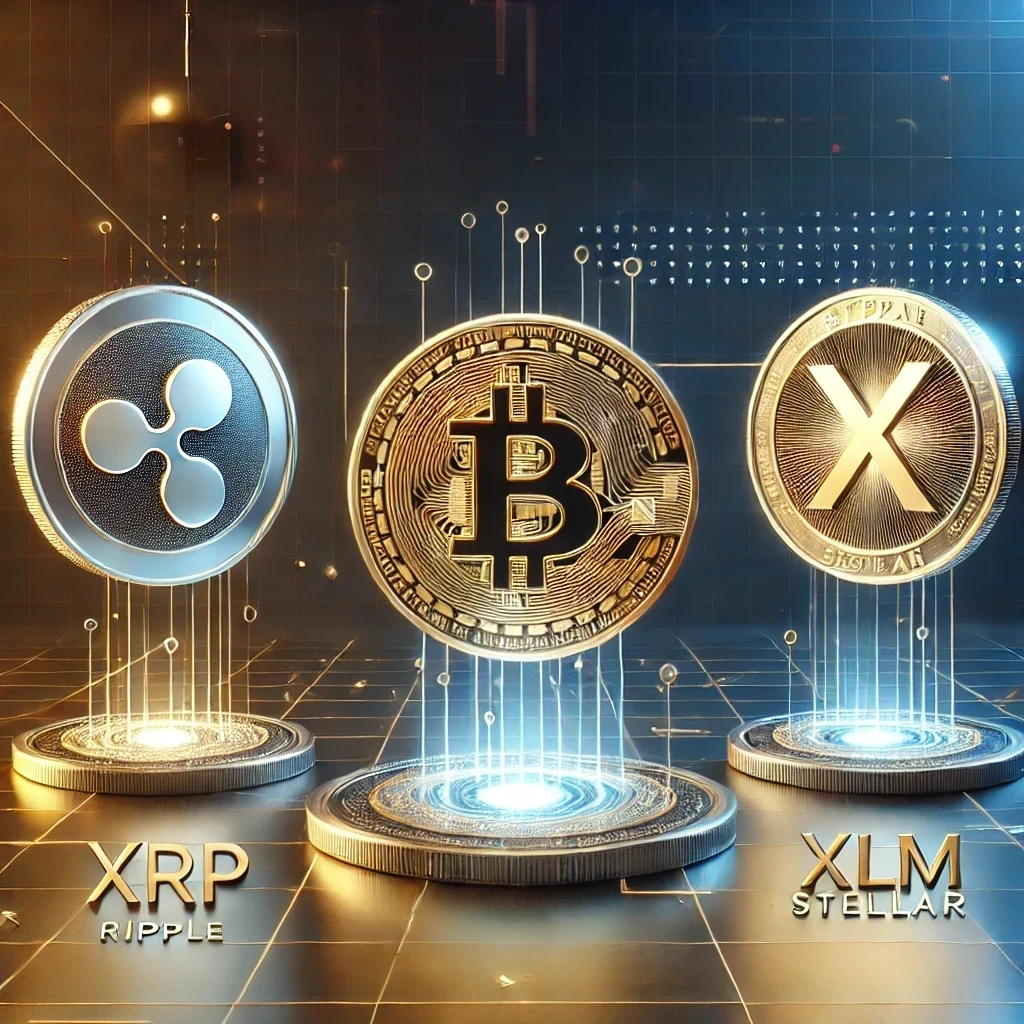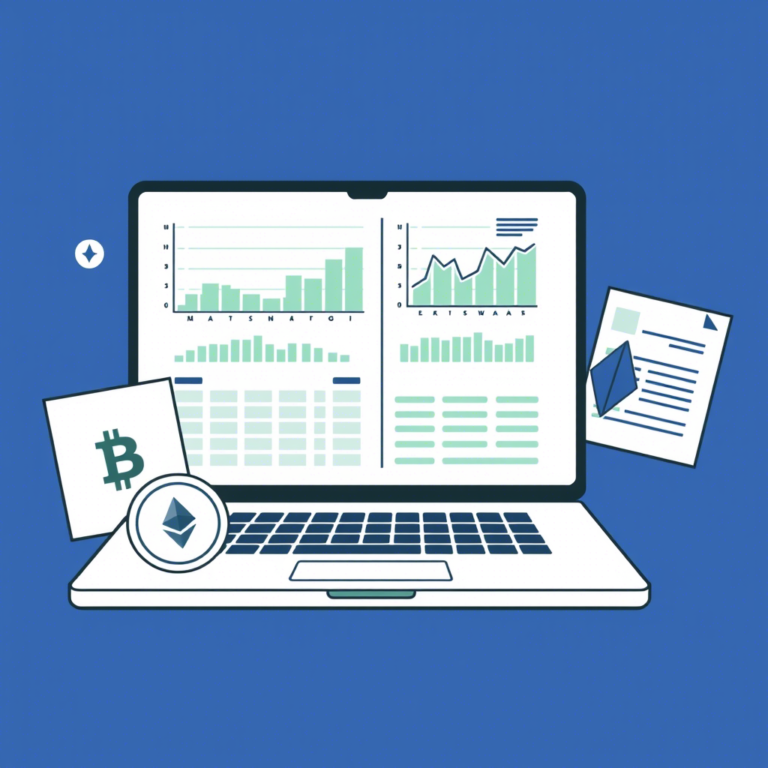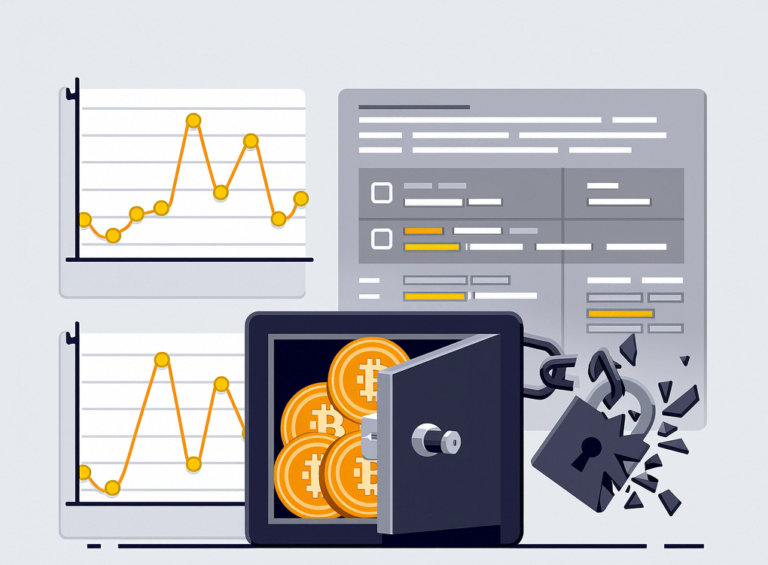Decentralized Finance (DeFi) is one of the most prominent applications of blockchain beyond simple cryptocurrency transfers.
Introduction
By harnessing smart contracts, DeFi protocols replicate or transform traditional financial services—like lending, trading, or asset management—without centralized intermediaries. Instead, a global community of users can lend, borrow, and swap tokens in a trust-minimized environment, with everything governed by transparent code.
In this article, we’ll clarify what DeFi is, highlight its core principles, and explore major use cases (lending, DEXs, stablecoins, yield farming), as well as the risks and security considerations for users. Whether you’re new to crypto or already dabbling in decentralized exchanges, these fundamentals will help you navigate DeFi’s fast-paced and continually evolving ecosystem.
What Is DeFi?
DeFi stands for Decentralized Finance, an umbrella term describing financial applications built on permissionless blockchains (mainly Ethereum, but also BNB Chain, Solana, Polygon, etc.). These applications:
- Eliminate or reduce middlemen (like banks, clearing houses).
- Operate via smart contracts, enforcing rules automatically.
- Welcome users globally, as long as they have a compatible wallet and internet connection.
Examples include decentralized exchanges (AMMs), lending and borrowing protocols, stablecoins, and derivatives (options, futures). By allowing peer-to-peer interactions, DeFi redefines how people access credit, earn interest, trade assets, and even govern entire networks through token-based voting.
Core Principles of DeFi
-
-
Trustless
- Users rely on code and consensus rather than a bank’s or brokerage’s promise.
- Once the smart contract is audited and deployed, it can run with minimal human intervention.
-
Permissionless
- No need to request approval or create a traditional account. Anyone can join and exit protocols at will.
-
Transparency
- On a public blockchain, transactions and contract code are verifiable, allowing for community oversight.
-
Programmability
- Through smart contracts, developers can automate complex financial logic—like yield distribution or liquidity provisioning—without manual management.
-
Global and Borderless
- DeFi’s open nature means it’s not restricted by typical national boundaries or bank opening hours.
-
Essential Building Blocks
-
DeFi operates at the intersection of key blockchain innovations:
- Smart Contracts: Self-executing rules that automatically move or lock funds given certain conditions.
- Token Standards: e.g., ERC-20 for fungible tokens, ERC-721/ERC-1155 for NFTs. Provide consistency so different protocols can easily interact.
- Wallets: Non-custodial clients (like MetaMask, Trust Wallet) let users hold private keys and interact with dApps.
- Oracles: Provide real-world or off-chain data (asset prices, interest rates) to DeFi contracts.
- Layer-2 Solutions: Off-chain or sidechain computations to handle large volumes of transactions at lower fees.
Without these, DeFi’s scale, speed, and trust-minimized operations wouldn’t be possible.
DeFi Categories and Examples
-
Decentralized Exchanges (DEXs)
- Automated Market Makers (AMMs): Protocols like Uniswap, Curve, PancakeSwap use liquidity pools instead of order books.
- Liquidity Providers: Users deposit pairs of tokens, earning fees as traders swap between them.
- Advantages: No central listing fees, non-custodial, censorship-resistant.
- Caveats: Gas fees, impermanent loss for liquidity providers.
Lending and Borrowing Protocols
- Aave, Compound, MakerDAO: Let users deposit crypto to earn interest, while borrowers provide collateral to receive loans.
- Over-Collateralization: Typically, borrowers must lock more value than they borrow to mitigate defaults.
- Flash Loans: Unique to DeFi, allowing zero-collateral loans if repaid in the same transaction—exploitable but also a powerful trading or arbitrage tool.
Stablecoins
- Fiat-Collateralized: USDC, USDT. Backed by real-world reserves for price stability.
- Crypto-Collateralized: DAI minted by locking ETH or other assets in Maker Vaults.
- Algorithmic: Attempt to maintain pegs via code-based supply/demand manipulation; can fail if market confidence evaporates (e.g., TerraUSD collapse).
Yield Farming and Liquidity Mining
- Liquidity Farming: Providing tokens to DEX pools or lending protocols to earn additional governance or reward tokens.
- High APYs: Early adopters sometimes see large returns, but yields often decline as more participants join.
- Risks: Impermanent loss, volatility, potential rug pulls or contract exploits if the protocol is unaudited.
DeFi Governance and Tokens
-
DeFi governance often involves:
- Governance Tokens: e.g., UNI, COMP, MKR. Token holders propose/vote on protocol changes—like interest rates, fee models, or treasury usage.
- Community-Driven: Shifts control from dev teams to stakeholders, aligning incentives for platform growth.
- DAO Structures: Some projects fully embrace decentralized autonomous organizations, distributing treasury management and upgrades to token voters.
However, large holders or whales might dominate votes if ownership is uneven, highlighting the complexity of truly decentralized governance.
Benefits of DeFi
-
-
Financial Inclusion
- Users worldwide can access lending, saving, or trading features without a bank account or official ID (beyond basic wallet usage).
-
Reduced Middlemen
- Minimizes overhead, potentially improving interest rates or enabling micropayments and microloans not viable in traditional finance.
-
24/7 Market Access
- Protocols never close; participants can deposit, borrow, or trade anytime, as blockchains run continuously.
-
Transparent and Auditable
- All transactions happen on-chain. The community can track liquidity, trades, or loan collateral for real-time accountability.
-
Innovation and Composability
- DeFi protocols often integrate, forming “money legos”: using yield-bearing tokens as collateral in another platform, or building aggregator dashboards.
-
Risks and Challenges
-
-
Smart Contract Bugs
- Exploits can drain liquidity in minutes. Thorough audits and bug bounties help but never guarantee absolute safety.
-
Impermanent Loss
- Liquidity providers in AMMs can lose potential gains if token prices diverge significantly from initial deposit.
-
Price Volatility
- Sharp market swings can quickly lead to undercollateralized loans or forced liquidations.
-
Regulatory Ambiguity
- Some tokens might be unregistered securities, or KYC/AML requirements might be mandated, conflicting with open-access ethos.
-
User Error
- Sending assets to wrong addresses, signing malicious dApp transactions, or ignoring suspicious domain names can result in permanent losses.
-
Centralized Components
- Some DEX front-ends or oracles remain centralized, creating potential chokepoints.
-
Security Best Practices
-
Use Reputable Protocols
- Look for audits from firms like CertiK, ConsenSys Diligence, or Quantstamp. Check community feedback on the project’s track record.
-
Small Test Transactions
- If depositing or trading large amounts, do a small test trade or deposit first to ensure everything works as expected.
-
Avoid Over-Leveraging
- Borrowing up to your collateral limit invites liquidation if prices dip, so maintain a comfortable safety buffer.
-
Hardware Wallets
- Storing private keys on hardware wallets (Ledger, Trezor) can protect against phishing or software hacks.
-
Check URLs and Domain Authenticity
- Phishing sites impersonate popular DeFi platforms. Always confirm you’re on the correct domain.
Regulatory Environment
DeFi operates in a global “gray area”:
- Securities Laws: Some governance tokens might be interpreted as investment contracts.
- AML Compliance: Some front-ends block IPs from restricted regions or require KYC for large trades.
- Stablecoins: Regulators often worry about fractional backing or redemption policies, prompting discussions on stablecoin legislation.
- DAOs: If no central operator manages user funds, it’s unclear who’s legally accountable if things go wrong.
Policy developments vary by country. The EU’s MiCA, U.S. SEC statements, and Asia-Pacific frameworks all shape how DeFi adapts or relocates.

Future Outlook
DeFi remains a frontier, yet it’s evolving rapidly:
- Layer-2 adoption (Optimistic Rollups, zkRollups) or alternative chains (Solana, Avalanche) can lower fees, attracting broader user bases.
- Cross-Chain Protocols: Projects bridging liquidity across multiple blockchains could unify the DeFi ecosystem, boosting capital efficiency.
- Institutional Involvement: Banks or hedge funds might use permissioned DeFi or partner with existing protocols, injecting liquidity but raising questions on decentralization.
- Advanced Products: On-chain derivatives, insurance markets, or real-world asset tokenization pushing boundaries of decentralized finance.
- UX Improvements: Tools hiding complexities (gasless transactions, social recovery) help mainstream users adopt DeFi seamlessly.
As Web3 matures, DeFi is poised to challenge or complement conventional finance, fueling new models of global economic participation.
Conclusion
Decentralized Finance (DeFi) harnesses smart contracts on blockchains to deliver open, transparent financial services—lending, exchanging, stablecoins, yield-earning strategies—minus centralized gatekeepers. By enabling trust-minimized, peer-to-peer interactions, DeFi fosters innovation and inclusion, letting users globally access advanced financial tools with just a wallet.
However, DeFi’s promise of empowerment and efficient capital markets comes with risks: smart contract exploits, volatility, potential regulatory pushback, and user-error pitfalls. As solutions for scalability, user experience, and security take hold—backed by supportive compliance frameworks—DeFi could reshape how people bank, invest, and transact, forging a world of finance that’s more open, collaborative, and user-centric than ever before.
Keep Up to Date With Us
Discover the world of our news. Post your article so that it will be featured in our magazine.
Additional Resources
-
DeFi Pulse
defipulse.com – Track DeFi protocols by total value locked, giving insights into the most popular or capitalized platforms. -
Aave
aave.com – Leading lending and borrowing dApp on Ethereum, demonstrating the power of smart contract-based finance. -
Uniswap
uniswap.org – A pioneer in decentralized exchanges (AMM model), featuring permissionless token swaps. -
MakerDAO
makerdao.com – Collateralized lending platform behind DAI stablecoin, showcasing on-chain governance. -
SushiSwap
sushi.com – A fork of Uniswap with additional yield farming features, reflecting DeFi’s composability and open innovation. -
Binance Academy
academy.binance.com – Educational resources on DeFi, yield farming, stablecoins, and crypto security.








